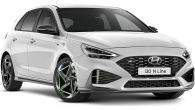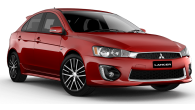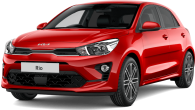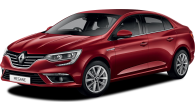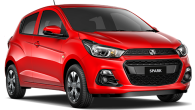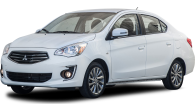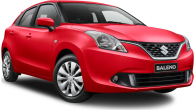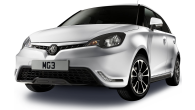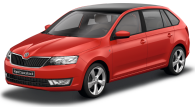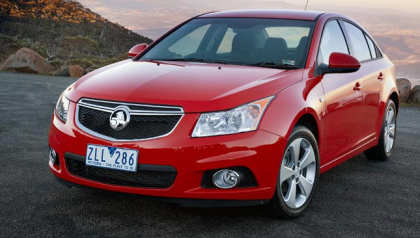Designed for the European market at Hyundai’s Technical Centre in Russelsheim, Germany, the new i30 takes on the South Korean company’s ‘fluid sculpture’ style which, it says, is inspired by nature and modern architecture. More practically, it gives the vehicle a slippery co-efficient of friction of Cd 0.30, a cornerstone of fuel economy.
Value
Since its launch Downunder the new Hyundai i30 has picked up the SUNA Traffic Channel, a digital information service that broadcasts detailed information about traffic congestion and other road conditions directly to compatible in-car satellite navigation devices. SUNA is standard in Elite and Premium models. The handy traffic avoiding service is now available in Brisbane, Sydney, Melbourne, Canberra, Adelaide, Perth and on the Gold Coast.
The new Hyundai i30 satellite navigation is a first for Hyundai vehicles in Australia and features a 7-inch touch screen, motorway junction views, lane guidance, speed warnings, 3D landmarks, multi-route planning (fast, short, eco), ‘easy access to parking’ location function, traffic information through Traffic Message Channel, detour function and address input with intelligent keyboard.
The usual connectivity is on hand with AUX, USB and iPod/iPhone input and Bluetooth with hands-free phone and audio streaming. One glaring omission is stop/start engine technology, increasingly being found in vehicles today, a further aid to fuel economy. The Hyundai i30 Premium 1.6 turbo-diesel six-speed automatic sells for $32,590, plus on-roads.
Technology
The 1.6-litre CRDi diesel engine has been updated to produce 10.6 per cent more power (94 kW) over the previous i30 and 3.4 per cent reduction in combined highway/urban fuel consumption, with the six-speed automatic transmission adding to the economy equation by running a tall top gear.
Design
Hyundai i30 gets straight to the point in the styling stakes, with Hyundai’s signature hexagonal radiator grille (chrome in the Premium test car we have sampled for the past week), flanked by the latest design HID xenon headlamps. Sleek lines, offset by sculpted wheel arches housing 17-inch alloy wheels, continue down the side of the vehicle, ending in a rear that emphasises the vehicle’s wide stance.
The roof in the i30 Premium incorporates a two-piece panoramic sun roof, the light from which adds a feeling of space inside the cabin. A spoiler is positioned where the roof meets the rear window. The Hyundai emblem houses a reversing camera which improves the limited rear view through a small back window.
With room for five people – if they are not overly wide – the Premium i30‘s cabin lives up to the model moniker with a modern mix of quality hard and soft surfaces. The driver enjoys a 10-way power seat, plus heating with two functions.
Safety
The Hyundai i30, which comes in Active, Elite and Premium variants, has also been recognised as ‘one of the safest in the small-car category’ by the Australasian New Car Assessment Program, with the new-generation Hyundai being awarded the maximum five-star ANCAP safety rating.
This second-generation Hyundai i30 received good results across the five tests – frontal offset, side impact, pole, whiplash, and pedestrian protection – to receive the maximum rating, an improvement in overall score compared to the first-generation five-star rated i30, up from 32.54 points to 35.69.
Seven airbags and rear parking sensors standard across the range, plus a full suite of standard active safety technology including ESC, TCS, ABS, EBD and BAS ensure the i30 is on a par with the best, and more expensive, passenger vehicles around.
Driving
Instruments are made easy to read with sports-style layout and blue back lighting. The Hyundai engine fires up via a start/stop button, while an electronic park brake gets the vehicle under way with a minimum of fuss. The four-spoke steering wheel incorporates a variety of controls, including cruise control, audio and air-con. The driver can dial up one of three steering modes with Flex Steer – another new feature from Hyundai.
Flex Steer’s ‘Normal’ provides a balance between steering input and feedback, making it ideal for the majority of roads; ‘Comfort’ reduces the weight of steering, allowing for effortless manoeuvring and more relaxed driving; ‘Sport’ increases steering weight and feedback for maximum driver involvement. At motorway speeds the test i30 CRDi had fuel consumption of 5.2 litres per 100km, increasing to about eight litres per 100km in hard stop-start traffic motoring.
Verdict
The suspension and steering have been especially tuned for Australian conditions, which only adds to the i30’s appeal.
Hyundai I30 2012: Premium 1.6 Crdi
| Engine Type | Diesel Turbo 4, 1.6L |
|---|---|
| Fuel Type | Diesel |
| Fuel Efficiency | 5.6L/100km (combined) |
| Seating | 5 |
| Price From | $8,580 - $12,100 |
| Safety Rating |
|
Pricing Guides

Range and Specs
| Vehicle | Specs | Price* |
|---|---|---|
| SLX 1.6 Crdi | 1.6L, Diesel, 4 SPEED AUTOMATIC | $5,500 - $7,700 |
| SX | 1.6L, Diesel, 4 SPEED AUTOMATIC | $5,610 - $7,920 |
| SX | 1.6L, Unleaded Petrol, 4 SPEED AUTOMATIC | $5,060 - $7,480 |


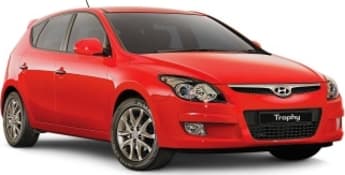

.jpg)


